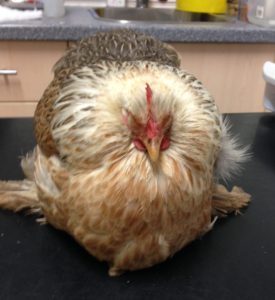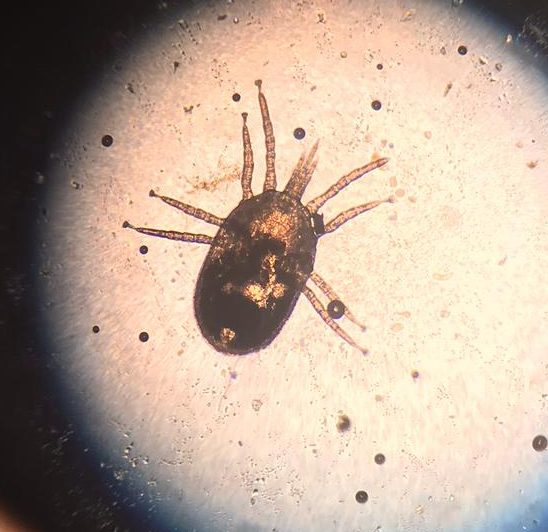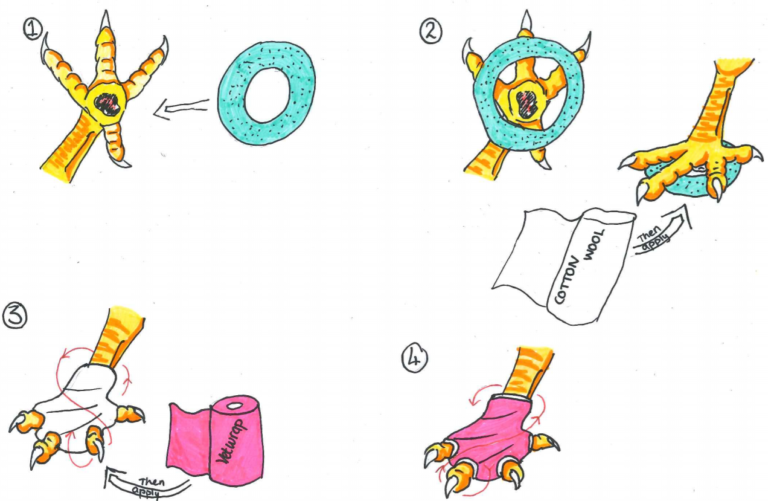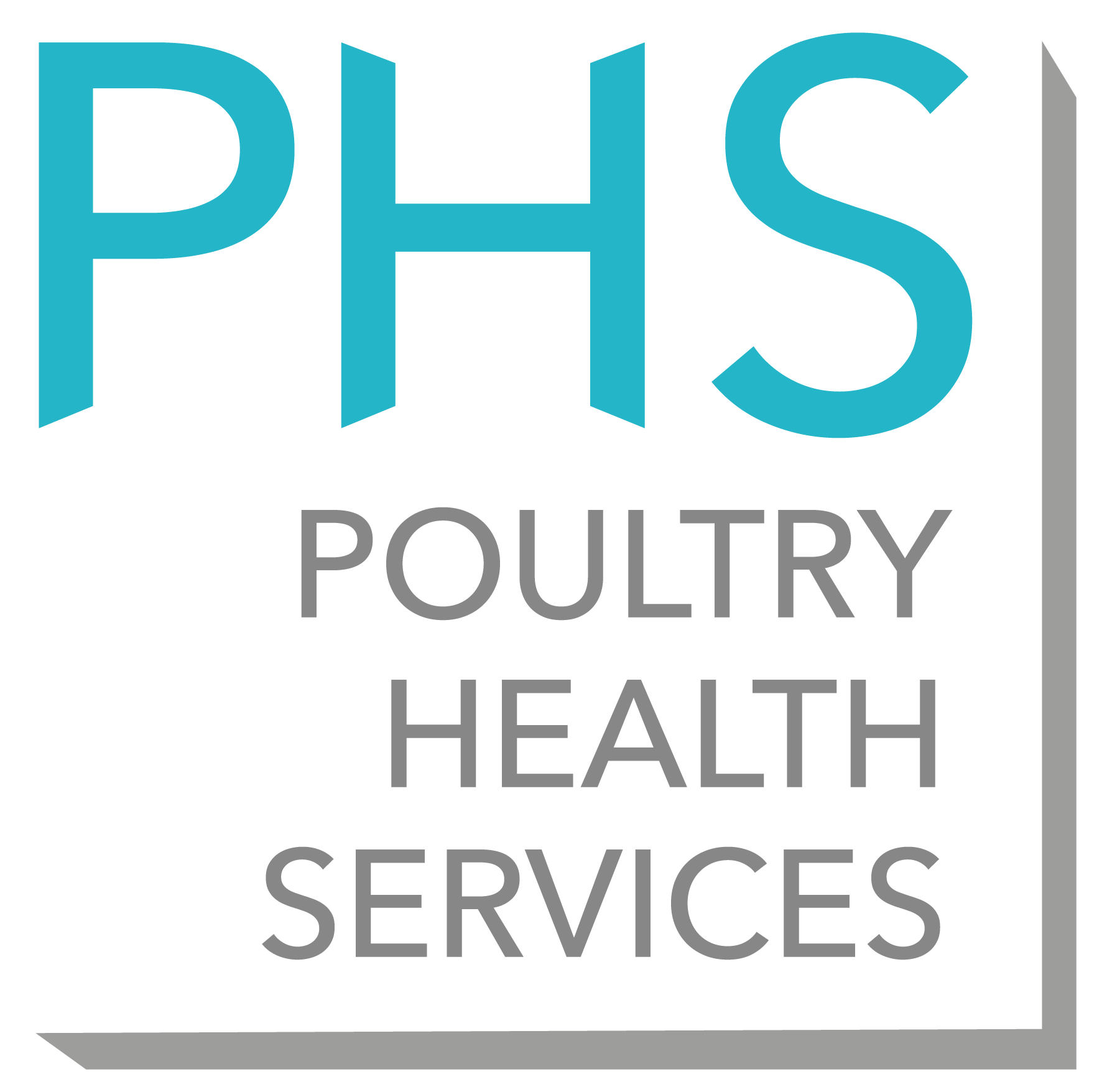Backyard Poultry
ZOONOSES – DISEASES OF BOTH HUMANS AND ANIMALS
ZOONOSES – DISEASES OF BOTH HUMANS AND ANIMALS
Salmonella
Salmonella are gram-negative bacteria that reside in the intestines. There are many different species of salmonella, all preferring to inhabit different species.
Testing your birds for salmonella involves the testing of faeces. In order to more accurately assess the status of your flock it is important to collect faeces produced over five to seven days because salmonella is not shed into faeces every day.
Why is salmonella important to be aware of?
Two species – Salmonella Typhimurium and Salmonella Enteritidis – are of importance in backyard poultry as they may infect humans. They can cause abdominal pain, diarrhoea, vomiting and fever of varying severity if ingested. The chicken, however, will show no symptoms.
These bacteria are reportable, meaning that should there be a case confirmed through testing it must be reported to the government for them to take the appropriate action in controlling it.
There is a national control plan (NCP) in place for the monitoring of these salmonella species in commercial flocks. This is relevant to you if you are selling eggs through a third party. Legally, you should also register your flock with the government if you have more than 50 birds. If you have less than 50 birds it is optional. If you have less than 50 birds and you are only performing at the gate sales or giving away to friends and family then you do not have to take part in the NCP. More information can be found here: Uk Government website.
Can salmonella cause disease in chickens?
There are some species of salmonella that may cause disease in chickens, but not in people. These are not part of the NCP.
Birds infected with these species will show the following symptoms:
- Decreased appetite
- Decreased egg production
- Depression
- Birds with ruffled feathers in a hunched position
- Sometimes lameness with swollen hocks
- Poor hatchability and young chick survivability from breeding flocks
- Diarrhoea
- Death

INTESTINAL WORMS
Intestinal Worms
There are three main species of worm that can cause problems in your flock:
Ascaridia
These are large white worms found in the small intestines. In small numbers these are fairly harmless. However, once the numbers start to increase birds will start to scour, have anaemia, struggle to digest feed effectively, lose weight and cause the number of eggs and the egg quality to drop. In severe cases, these worms may cause an intestinal blockage.
Heterakis
These are small hair like worms that are found in the blind ended sacs known as caeca. They are mainly an issue as they are known to carry a protozoa known as Histomonas Meleagridis which can cause the disease ‘blackhead’.
Capillaria
These are small, thin barely visible worms that inhabit the crop and intestines. They burrow into the walls and cause inflammation of the infected area. Severe burdens can lead to death.
Coccidiosis
This disease is usually a disease of younger birds as older birds develop immunity to it. It is not caused by a worm but by a protozoa known as coccidia.
Birds will appear hunched with ruffled feathers, be scouring, lose weight and in some cases become anaemic. Droppings may also contain red mucus.
Different species of Coccidia are species specific and even within those species will only affect certain areas of the gut. It damages the intestinal walls causing inflammation, cell damage and in some cases bleeding.
The most common types of Coccidia are:
Acervulina – causes inflammation in the upper part of the small intestine.
Maxima – causes inflammation throughout the small intestines.
Tenella – causes bleeding into the caeca.
How is best to manage worms and coccidiosis in my birds?
In older birds, we recommend performing a worm egg count every two to three months to check worm egg levels. Usually if any Heterakis or Capillaria eggs are detected we recommend worming with a licensed product such as Flubenvet (flubendazole). Herbal products have limited use and there is little evidence that they can provide a benefit in clinical cases of worms.
In younger birds it is important to monitor for coccidiosis. We also recommend performing a coccidial oocyst count if birds are beginning to show symptoms. There are many different treatments available for coccidiosis. Discussion with your vet would be advised.

From left to right : Tapeworm, Ascardia (large worm), Heterakis (small worm at top right)
MITES AND LICE
MITES AND LICE
There are many species of ectoparasite that can be found on poultry. Below are some of the more important species than can cause disease. They can be divided into two groups:
- Permanent or stationary parasites – lice, scaly leg mite and northern fowl mite. The parasites mainly live on the bird: they cannot survive long in the environment.
- Intermittent bloodsucking parasites – red mite. There are only a few individuals that remain on the bird. The majority live in the environment and only approach the bird to feed.
Red mite
These mites are the most common ectoparasite of poultry in the world and have a massive economic impact on the commercial chicken industry. They feed during the night and spend about 30-60 minutes on the host at any one time. Otherwise they can be found in dark places such as under perching and in cracks in the coop. Reportedly, red mites can survive without feeding for up to nine months. This can make them very difficult to eliminate from your flock and housing. Like many parasites, they can also be a carrier of many viral and bacterial diseases such as Newcastle disease and Salmonella. These mites are very small and can appear black or red. They have been known to bite humans and may cause an itchy rash or allergic reaction.

Red mite under microscope.
Symptoms in the bird.
- Stress related behaviour (increased vocalisation, pecking, flightiness or aggression).
- Decreased egg production.
- Pale combs and wattles (anaemia).
- Blood streaks or spots on eggs.
Diagnostics
Visual inspection of the shed and chickens; Red mites like places such as perches, nest-boxes and cracks and crevices. They are very small and if they are present rubbing crack debris across the back of your hand will result in a red streak (the mites last meal; chicken blood).
The presence of abnormal flock behaviour.
Glue traps, straws taped to the bottom of perches or corrugated cardboard can be used to catch mites to check for their presence.
Treatment
There are two areas to target for effective red mite control.
The coop – the most important area to target;
- Remove all bedding and wash the coop out thoroughly.
- Treat the coop with disinfectant products that have some action against red mite such as Poultry shield or Harmonix.
- Cover the coop liberally, cracks and perching with diatomaceous earth powder.
- In cases of wooden coops, due to the large number of hard to reach cracks and crevices it may be easier to dispose of the coop (burn it).
The bird;
- Introduce diatomaceous earth dust baths, this product can be bought online, mixing this product with some standard soil may encourage the birds to use it.
- Use products such as Exzolt (available from some poultry vets) – this will kill the mites once they feed on the birds.
Control and prevention
Red mite control is a war not a battle. You must target the red mite from several angles to keep it under control.
Introduce dust bathing boxes containing diatomaceous earth, kaolin clay or a sulphur-based product. Provision of dust boxes may be a simple and effective method of external parasite control for a backyard flock as well as good entertainment for birds.
Good premises hygiene – frequent cleaning and close observation to check if any red mite are present. If they are present, treatment as soon as possible is advised.
Northern fowl mite
Also known as the American louse because of its strong presence in North America in many domestic and wild birds. However, it is also found in Europe. Its appearance is almost identical to red mite but it lives its entire lifecycle on the bird and cannot survive for extended periods of time in the environment. The mites can be easily seen by parting the feathers around the vent region. The skin in that area may also be cracked with scabs. Young birds tend to be more susceptible.
Symptoms
- Pale wattles and combs.
- Death due to anaemia.
- Mites are commonly first discovered around vent region or seen on eggs.
Diagnosis
Visual inspection of the shed, birds and eggs.
Treatment
Birds should be treated directly with a suitable mite powder, spot on or through the drinking water.
Control and prevention
Good hygiene – frequent cleaning and regular bird checks in order to spot the mite. If they are present, treatment as soon as possible is advised.
Restrict access to wild birds as much as possible. Drinker and feeders are common shared contact areas.
Introduce dust bathing boxes containing diatomaceous earth, kaolin clay or a sulphur-based product. Provision of dust boxes may be a simple and effective method of external parasite control for a backyard flock.
Lice
There are more than 40 different species of lice: the most common include the body louse, the shaft louse and the head louse. More than one species can be present on the bird at one time. The entire life cycle of a louse takes place on the host and transmission between birds occurs via direct contact with another infected bird. Female lice can lay a significant number of eggs over a very short period, which can be seen on the base of feathers by naked eye. They mainly feed on skin fragments and feather debris. Lice infestation appears to be worse in the autumn and winter.
Symptoms
- Reddened, irritated skin with small scabs.
- A moth-eaten appearance to feathers.
- Visible lice around the vent region.
- Loss of feathers.
Diagnosis
Lice can be easily seen with the naked eye: they are yellowish in colour.
Treatment
Treatment option are variable, similar to above.
Control and prevention
Clean and disinfect the housing thoroughly.
Replace the litter completely, paying special attention to the nests.
Scaly Leg Mite
Otherwise known as ‘Knemidocoptes mutans’. This mite is microscopic and burrows between the leg scales of chickens.
Symptoms
- Painful swollen legs.
- Raised leg scales (sometimes can be very discreet).
- Crusted legs.
Diagnosis
Visual inspection of the leg is often enough.
Treatment
Some spot on treatments on the back of the neck have shown effectiveness. Usually Ivermectin 1%.
Submerging the leg in a methylated spirit and then smothering the mites by applying Vaseline for a few days may be enough in the early stages of scaly leg. Continue the treatment until all symptoms have gone.
Control and Prevention
Stay vigilant for the early signs of the parasite (raised leg scales).
BUMBLEFOOT
BUMBLEFOOT
Otherwise known as ‘pododermatitis’. This condition occurs when the environment that the birds are in is suboptimal; Wet bedding, stony environments (that may cause abrasions) or wire. This may mean the footpad is under too much pressure and sores develop.
This is a very painful condition and will be visible initially as lameness in your hens. It comes in varying severity and may require surgical intervention and antibiotics in severe or long-term cases.
Treatment and Prevention
If your bird is struggling with bumblefoot, first clean the wound with an appropriate antiseptic wash such as hibiscrub or salt water. Bandaging with a soft foam ring covered by cotton wool and vet wrap will help it to heal more quickly as it will take the pressure off the foot pad (see the diagram below). The foot should be flat so that weight can distribute evenly between all four toes.
This should be changed every couple of days and not allowed to become wet.

1-2: Clean and disinfect wound. Measure and apply foam ring, all toes must be supported.
2-3: Apply cotton wool/ softban in figure 8 pattern. Ensure bandage pressure is not constrictive.
3-4: Apply Vetwrap/ veterinary adhesive layer to secure soft layer. Again ensure excessive pressure is not applied.
It is also important to address the causes of bumblefoot:
- Softer bedding/restrict access to rough areas.
- Remove them from the wire or provide somewhere for your birds to stand to get away from it.
- Frequent wet bedding removal.
- Allow the birds to exercise more freely.
THE ABNORMAL EGG
THE ABNORMAL EGG
What is safe to eat?
The egg can tell us a lot about the health and nutritional status of a hen. In the backyard flock there are often questions over what is safe to eat or not.
Diseases such as infectious bronchitis, aMPv and mycoplasma (which all cause snicking, head shaking, nasal discharge), Newcastle disease (see notifiable diseases) and egg drop syndrome (a decrease in egg production caused by adenovirus) may also cause some of the egg abnormalities below.
If any bird begins to produce an abnormal egg on multiple occasions, seek the advice of your vet. Otherwise you may use this guide:
| Egg shell abnormality | Causes | Safe to eat? |
|---|---|---|
| No shell/soft shell | Young birds coming into lay. Sulphonamides (antimicrobial treatment, shouldn’t be used in layers). | No – risk of bacterial contamination. |
| Misshapen eggs | Young birds coming into lay. Older birds (due to reduced muscle tone in oviduct). Early calcification causing uterine damage. Adrenaline release due to stressful events such as moving and handling. | Yes |
| Corrugated eggs | Legume seeds such as peas. | Yes |
| Flat sided eggs | Release of two eggs into the reproductive tract at one time. Abnormal uterine pressure during calcification process. | Yes |
| Thin, soft eggs | Imbalanced ration: inadequate calcium, phosphorus, manganese and vitamin D3. Inadequate feed intake. Excessive temperature. Night disturbance disrupting the shell formation. Sulphonamides (antimicrobial treatment, shouldn’t be used in layers). Old birds. | Caution |
| Rough surface | Sulphonamides (antimicrobial treatment, shouldn’t be used in layers). Excessive calcium. Young birds coming into lay. Aging birds due to reduced muscle tone in oviduct. Adrenaline release due to stress. | Yes |
| Mottled egg surface | Humidity extremes. Marks from environment (e.g. red spots may be red mite) | Yes |
| Yellow shells | High levels of tetracycline antimicrobials. | No |
| Cracked eggs | Too high stocking density. Inadequate cage design, poor collection method. Reduced shell thickness. | Avoid as risk of bacterial contamination. |
| Pale eggs | Free range birds (sun bleaching). Sulphonamides (antimicrobial treatment, shouldn’t be used in layers). Nicarbazin (coccidiostat not routinely used) given in feed. Piperazine (wormer not routinely used). | Yes – providing no history of drugs as mentioned. |
| Egg contents abnormality | Causes | Safe to eat? |
|---|---|---|
| Loose air cell | Rough handling. | Yes |
| Blood spots | Inadequate environmental temperature. Birds have continuous light. Nutritional deficiencies: vitamin K, vitamin A. Stress. Mycotoxins (moulds/fungi – contaminated feed, feed bins, bedding). Vent pecking by other birds. Red mite infestation. Aging birds. | No |
| Abnormal yolk colour | Diet: access to pigmented plants, cottonseed and kapok seed meal in feed, oxidative breakdown of natural or synthetic carotenoids due to immunological challenge or inadequate vitamins in diet. Any underlying infection causing immune suppression will result in ingested carotenoids being broken down (oxidation) and used as antioxidants, instead of contributing to yolk colour. Birds require a healthy gut in order to absorb carotenoids from the diet. Bacterial contamination. | Yes, as long as not green. |
| Reduced yolk colour (with adequate carotenoid in feed) | Inadequate feed consumption. Mycotoxins. Oxidative breakdown of carotenoids due to immunological challenge and/ or inadequate vitamin uptake. Intestinal parasites. | Yes – as long as birds appear healthy. |
| Mottled yolk | Mild level of mottling is normal. Abnormal mottling may be a result of: Excessive dietary pigment, excessive chilling of eggs or partial freezing when laid in free range environment, high storage temperature. | Yes, if at a mild level. |
| Cheesy appearance of yolk | Chilling of eggs in free range systems, cotton seed meal, kapok seed meal. | Avoid |
| Yolk taint | Some birds genetically lack the enzyme for breaking down trimethylamine (TMA) in fishmeal, resulting in a fishy taint in the yolk. Excess dietary choline as TMA is released by bacterial fermentation of choline in the gut. Using unsuitable detergents to clean the eggs and storing them near strong odours during cooling may also result in taint. | No |
| Flat yolk | Nicarbazin (coccidiostat). High storage temperature. Excessive storage times. Inappropriate storage with eggs stored blunt end down. Watery white. | No |
| Watery white | Warm and prolonged storage. Genetic predisposition. | Yes if fresh. No if stored for too long. |
| Pink white | Cottonseed oil, kapok seed meal. Excess iron in water or feed. Bacterial contamination | No |
| Abnormal chalaza | Prominent chalaza is associated with watery whites. Ruptured chalaza may result from infectious bronchitis. | Yes |
DEPRESSED HEN: NASAL DISCHARGE, SNEEZING OR GASPING
Sneezing, difficulty breathing, nasal discharge, swollen area around the eyes, ocular discharge or gaping are signs of respiratory disease in birds. There are many types of pathogens that can cause these diseases and they usually affect the sinus, trachea, air sacs or lungs.
The most common of these is:
Mycoplasma
One of the most common respiratory diseases seen in backyard poultry. It is a bacterial disease and there are two strains that cause disease in backyard poultry: Mycoplasma Gallisepticum (MG) and Mycoplasma Synoviae (MS). It is often associated with secondary bacterial infections (E. Coli) or other respiratory pathogens (like viruses). The bacteria can go months without showing any clinical signs (even after treatment) and not become apparent until the bird has a period of stress or concurrent disease.
Symptoms
- Sneezing/snicking.
- Rattling/ difficulty breathing.
- Nasal or ocular discharge.
- Swollen eyes and sinuses.
- Eggs may have a glassy top to them and be wrinkled or paler than normal.
- With Mycoplasma Synoviae you may also see hock infections and lameness.
- Poor quality chicks – Mycoplasma can be passed down to chicks from the parents.
Diagnosis
A swab of the choana (slit in the upper part of the mouth) or down the trachea (care must be taken to not damage the larynx) can be sent for MG or MS PCR.
In some cases it may be advised to submit one of these swabs for culture and antibiotic sensitivity.
Treatment
Use of a licensed antibiotic will be first line of treatment, however, mycoplasma can become resistant to antibiotics very quickly so careful consideration about when a bird needs treatment should be discussed with your vet to preserve the antibiotics efficacy.
Isolate the affected birds from the rest of the flock. It may also be wise to consider removal of that animal from the flock completely. Contact your vet to discuss plans to create a mycoplasma free flock, especially if they are used for breeding.
Other relevant pathogens include:
Opportunistic Bacterial disease
Bacteria like E. coli and ORT are opportunistic and will only cause disease if your birds are stressed, have immunosuppression or are infected by another pathogen that makes them more susceptible to infection (such as mycoplasma).
Symptoms
Variable but often just exacerbates the symptoms seen with diseases such as mycoplasma
- Snicking/sneezing.
- Nasal or ocular discharge.
- Swollen head, eyes and sinuses.
- Rattling/difficulty breathing.
Infectious Coryza
Caused by a bacterium known as Avibacterium paragallinarum. It affects chickens but is uncommon in backyard flocks. It is a very infectious bacteria and usually nearly all the chickens in a flock infected within around two weeks. Birds may carry this disease and transmit it to others despite showing no symptoms.
Symptoms
- Depression
- Nasal/ ocular discharge
- Swollen eyes/sinus
- Coughing
- Difficulty breathing
- Reduced egg production
- Death
Diagnosis
A swab from the choana/ trachea for culture and sensitivity. Requires a specialist medium to grow successfully.
ILT – Infectious Laryngotracheitis
A virus that causes severe irritation and damage to the larynx and trachea of a bird. It is not very common in backyard flock situations.
Symptoms
- Sudden death
- Severe coughing producing bloody mucus
- Extreme difficulty breathing/ rattling
Diagnosis
On clinical signs and post-mortem of deceased birds.
Throat/ tracheal swab PCR.
Prior exposure to the virus can be assessed by blood serology.
Infectious Bronchitis
A virus that causes considerable economic losses at the commercial level, however, backyard flocks are rarely affected by it. There are many different strains of this virus all with varying severity.
Symptoms
- Sneezing/snicking.
- Difficulty breathing.
- Nasal discharge (sometimes with ocular discharge).
- Occasionally swollen eyes/sinuses.
- Diarrhoea and depression.
- Pale eggs/ blind laying.
- Death.
Diagnosis
PCR on swabs from the cloaca/vent or trachea.
Prior exposure to the virus can be assessed by blood serology.
Avian Pneumoviruses (APV)
A viral group also known as Avian Metapneumovirus. This includes the viruses known as ART (Avian Rhinotracheitis) and TRT (Turkey Rhinotracheitis). This virus causes more severe symptoms in turkeys than chickens. This virus is uncommon in backyard flocks.
Symptoms
- Nasal/ ocular discharge.
- Swollen heads, eyes and sinuses.
- Rattling/ difficulty breathing.
- Snicking/sneezing/ coughing.
Diagnosis
RT-PCR on blood serum.
Prior exposure to the virus can also assessed by serology.
Prevention and Control
Maintaining good biosecurity will help reduce the likelihood of contracting and spreading these diseases.
Respiratory diseases can often be spread by nasal secretions contaminating in the drinking water, especially if sharing the resource with wild birds. We recommend the use of a water sanitisation product such as hydrogen peroxide with a silver stabiliser to reduce the level of spread between birds at this source.
A good environment for the birds is essential. When their living space is suboptimal it creates stress which makes them more susceptible to disease;
Temperature fluctuation: whilst out of our control it should be noted that temperature variations and wet/dry weather changes can make birds uncomfortable and therefore stressed. Always provide a warm dry area for birds to access.
Housing ventilation: A build-up of dust and ammonia can damage the airways of your birds and make them more susceptible to respiratory disease pathogens. Regular clean outs and good ventilation is a must to prevent this. A house that is well ventilated will have no moisture build up in the mornings and very few cobwebs developing.
Isolate new birds for up to four weeks before introducing them into your flock and continue to monitor them closely for signs of respiratory (and other) disease.
DEPRESSED HEN: SOUR CROP AND IMPACTIONS
Sour crop – Otherwise known as crop mycosis, crop mould, thrush
This disease occurs when the crop has an overgrowth of a yeast known as Candida Albicans. This usually occurs when the normal gut flora of a bird is compromised by a period of stress or antibiotic treatment.
Symptoms
- Depressed birds.
- Putrid, sour breath of affected chickens.
- Enlarged crop with excess fluid inside.
- Sometimes you can hear gurgling of fermentation.
Diagnosis
Crop enlargement
Foul smelling breath
Sometimes a wet smear examined under microscope will allow you to see the yeast cell (looks like a snowman).
Treatment
Apple cider vinegar given in drinking water at a rate of 15ml/L. This acidifies the crop and allows good bacteria to thrive.
In severe cases the crop may need emptying, this will require veterinary intervention as there is a high risk of a bird inhaling the contents of the crop and subsequent aspiration pneumonia developing.
Prevention and Control
Acidification of water during and after any period of stress or antibiotic therapy (with the apple cider vinegar mentioned above).
Use a probiotic after an antibiotic treatment.
Avoid periods of stress. Provide perching and toys to mitigate the risk of feather pecking or social stress developing.
Check for mouldy/contaminated feed. This will affect the environment of the gut and increase the likelihood of sour crop developing.
Crop impaction
When birds have eaten unsuitable things (i.e. too much grass) or there is a high worm burden the crop may become static. This results in an impaction.
Symptoms
- Decreased food intake.
- Hard lump within the crop that does not decrease in size when food is withdrawn.
Treatment
Treat birds for intestinal worms.
Surgical intervention by a vet may be required if severe.
Moisten the crop contents with vegetable oil or water combined and massage. Isolate the bird and withdraw food until mass has passed.
Prevention
Regular worming routine or faecal egg counts (every 4-6 weeks).
Restrict bird access to long grass, straw and foreign objects such as plastic or string.
DEPRESSED HEN: EGG BOUND
Occurs when a bird cannot expel a fully developed egg. This can be caused by excessively large eggs, blood calcium deficiencies, vent/injurious pecking issues or obesity. It may also occur in young birds if their pelvis has not developed fully. If left the bird may suffer from egg peritonitis and die.
Symptoms
- A bird that has stopped laying.
- There is evidence of discomfort, such as hunching, walking differently, reluctance to eat/ drink.
Diagnosis
Massage/palpation of the abdomen of the bird may reveal a hard mass.
An x-ray is a definitive way of telling if unsure.
Treatment
Do not break the egg inside of the bird. This can cause damage to the oviduct and result in pain, infection and eventual death of the bird.
In the first instance some simple measure may help the bird to expel the egg;
Place the bird in some warm water for 10-20 minutes. This can help to loosen the muscles around the egg, and she may eject it herself or with gentle massage.
Apply lubrication around the egg.
Should this be unsuccessful, contact your vet.
Prevention and Control
Preventing cannibalism and feather pecking is important. Enrichment of the shed and range with toys and perching will help to manage this.
Monitor the bird’s weights and obesity level (ex- commercial layers should weigh 1.8-2kg).
If fed a very rich diet, then egg size will increase. Should very large eggs (not double yolks) be seen often it may be necessary to reduce the quality of diet.
Check the calcium level in the feed.
DEPRESSED HEN: EGG PERITONITIS
Egg peritonitis is a common cause of sporadic death in layers. The condition occurs when the egg yolk is released into the abdominal cavity, instead of going down the oviduct. The peritoneum becomes inflamed due to infection with bacteria as yolk is the ideal growth media for them. E. Coli is the most common but Klebsiella spp, Proteus spp, Staphylococcus spp or Streptococcus spp can also be seen.
Stress is an important factor to increasing incidences of egg peritonitis. Other diseases, predators, rough handling or pecking problems may cause stress. Obesity, ovarian cancer, oviduct damage or inflammation will also contribute. It is important to determine the underlying cause in order to prevent this disease as the bird will continue to be affected up until eventual death.
Symptoms
- Distended abdomen.
- Birds will often position themselves in a penguin-like stance in an attempt to help relieve some of the discomfort.
- Hens are not in the lay, eggs may be soft-shelled, thin-shelled or have some deformity.
- Quiet, depressed bird.
- Weight loss due to inappetence.
- Frequent double yolk eggs.
- Sudden death.
Diagnosis
Behaviour of animals: hens are not laying eggs, depressed.
Physical examination: weight loss, hunched with ruffled feathers, abdominal distension, laboured breathing.
An ultrasound guided abdominocentesis by vet (observing the free fluid in the abdomen) may be required for a definitive diagnosis.
Treatment
This disease requires urgent veterinary attention as it is life threatening.
Treatment of the secondary bacterial infection is a must. A culture and sensitivity from the free fluid can be performed ideally to pick the most appropriate antibiotic.
Supportive care and pain relief will be required.
Prognosis in these birds is poor unless quick intervention is had.
An implant to prevent the bird from laying again is the only way to stop the condition reoccurring.
Prevention and Control
If large numbers of your birds are having this problem, further testing for the primary disease will be required.
Avoid obesity in birds. The average brown commercial layer hen should weigh around 1.8 to 2kg in adulthood. This will depend on breed size.
Drinking water sanitisation:
Water should always be clean as providing a bacterial soup to birds will increase the likelihood of a bird succumbing to bacterial and viral disease.
Sanitisation will also prevent virus and bacteria from spreading from bird to bird (including from wild bird to hen) through the water.
Prevent any sort of injurious pecking behaviour with toys, perching and plenty of range time.

